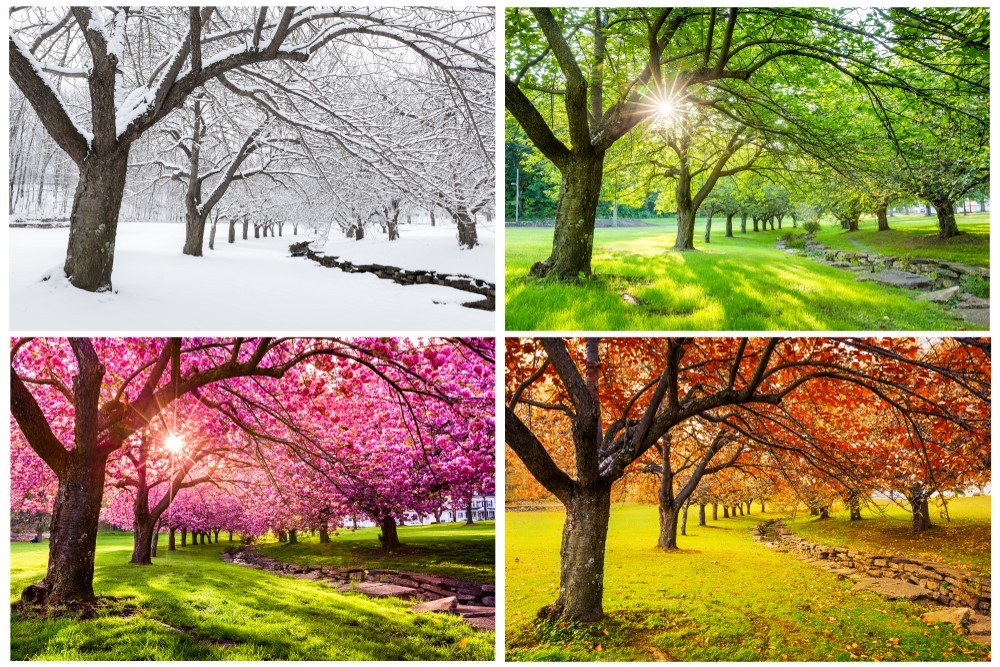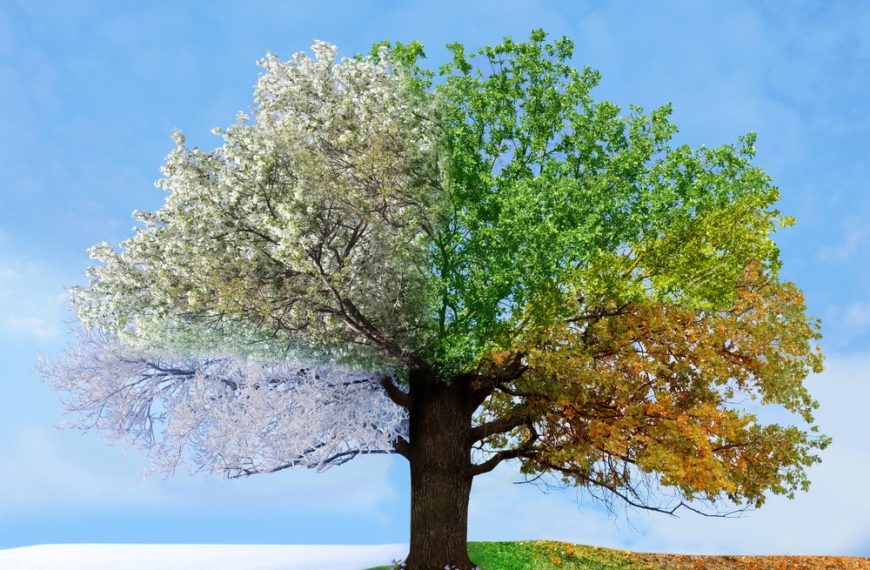Everyone has a favourite season! You cannot deny it either. It is pretty natural to love a certain time of the year more than the rest. Or at least have a preference for it.
After all, seasons are so fascinating are they not? Every year you get to move through at least four cycles of them, experiencing all the sights, sounds, and smells they bring in full swing.
Well, as adults if we can find seasons so fascinating, can you imagine the impact they can have on kids and toddlers? While kids will certainly find the changes fascinating, the four seasons for kids can cause adjustment issues too.
However, as a parent, you can make this transition easier for them by educating them about the weather and the changing seasons of the year.
The Earth’s tilted axis is the primary cause of our four seasons. As the Earth circles the sun, the hemisphere slanted towards it receives the greatest sunshine. Summer is when it receives more sunlight as a result of its tilt. The hemisphere tilted away from the sun receives less sunlight and experiences shorter days.
As a result, it gets colder, and this is the winter season. Because of the tilt of the Earth, the North Pole can experience 24-hour days of darkness. The equatorial region receives the maximum and sharpest sunlight. This explains why it is substantially hotter at the equator all year. Because it is hotter for longer periods, the seasonal differences are smaller
Seasonal Changes

- Spring :
- Summer :
- Fall :
- Winter :
In the Northern Hemisphere, spring begins in March and concludes in May. The weather begins to warm up, and the days grow longer. Trees and flowers begin to bloom, and animals emerge from hibernation.
In the northern hemisphere, summer begins in June and finishes in August. The days are long and warm. Many fruits and vegetables are in season during the summer.
In the Northern Hemisphere, fall begins in September and concludes in November. The weather begins to cool, and the leaves on trees turn colour and fall off.
In the Northern Hemisphere, winter begins in December and finishes in February. The days are short, and the weather is cold. Many animals spend the winter hibernating or migrating to warmer areas.
These timings of seasons will vary in the southern hemisphere. India, for example, lies in the southern hemisphere where the year-end signifies winter while April- June falls in summer. Similarly, July-September is the time for the monsoon.
How to Teach Seasons to Preschoolers
Here are ten tips that can get you started on this journey.
- Maintain a season’s journal
- Take a walk to soak in the season
- Get home the season’s produce
- Celebrate your child’s first seasonal encounters
- Use seasonal clothing
- Study the shift of sunlight
- Make your weather tracker
- Plant a seasonal flower
- Spot the animals of the season
- Observe the leaves
You can break down the four seasons for kids in a much easier manner by keeping a journal and teaching them every season by mentioning the season of the year. Encourage kids to go outside and draw what they see at least once every month. This could be anything that reflects the change of season. Be it the clothes people wear, the colours of the leaves of the trees, or season-specific jobs that people do such as raking leaves or shovelling snow. As long as the subject is tangible and makes a season of the year, keeping a record of it will help improve the observation skills of kids so they can understand different seasons better.
Seasons of the year for kids can become easier to grasp once they involve all of their senses in learning about them. The best way to do that is to take your kids for a walk in the neighbourhood park. As you stroll, ask your kids to stop and soak in the sights, sounds, smells, sensations, and tastes of the season. Enrich their vocabulary by asking them questions about how they feel outside. Do they find it cold or hot? Dry or humid? Is it raining or drizzling? Does the air feel fresh or damp? All of these are easy, simple, and helpful.
Another way to teach the seasons of the year for kids is to shop for its freshest and finest produce at your local farmer’s market. Pick only the vegetables and fruits exclusively available in that particular season. Bring it home and make a meal out of it so your kids can get a taste of the season. You can even maintain a scrapbook listing all the veggies and fruits you find including instructions and photos of any fun recipes you tried together.
From their first snow to their first time wearing a bathing suit, there are many season-specific milestones that you can celebrate. Marking each of these milestones on a calendar is a great way to create a seasons chart for kindergarten kids as they can keep referring back to it to know what happens when. Not to mention they will have a calendar filled with firsts!
In your season for kids, you can also mark the kind of clothes to wear each season. It can be a very simple way to familiarise kids with the idea of temperature and how it changes all year round. Ask your kid to use the calendar to mark the temperature of the day along with the type of outfit they are wearing that day. For example, if they wear a sweater, they can mention that. They can do this every week of the year and then analyse any trends or patterns they see.
During summer, it is vital to teach your kids why they should keep themselves safe from the rays of the sun. Here is how you can show them practically. Place two pieces of coloured paper outdoors, one in the shade and one in direct sunlight. After a few hours, get your kids to observe how the colour of the paper in the sunlight has faded.
Seasons for kids can become easier to learn if you make your weather tracker. All you have to do is get a dedicated calendar where you can draw the weather of each day and then track the changes. Make it fun by using the sun as the drawing for hot days, clouds for cloudy days, snowflakes for days it snows, and so on.
If you have access to a balcony or a backyard, plant the season’s flower there and let your kids observe how the plant changes, grows, wilts, and grows again each season. Record the plant’s various cycles so you can evoke a bit of scientific curiosity in your children regarding seasonal changes.
Even if you are living in the city, each season you might notice migratory birds dropping by for a quick visit before they settle in their final destination. Make your kids use binoculars to observe the creatures of nature and how they behave each season.
Be it spring, winter, summer, or autumn, nothing shows the effects of the season as well as leaves do. Go out with your kids and let them collect the leaves of each season, which they can then bring back home to analyse how their colours change as the temperature dips or rises. You can create a leaf journal recording all the details about the leaves you collect.
Learning about the seasons can be an extremely enriching experience for kids. Almost all of the activities and seasons named for kids and beyond help kids closer to nature. This can improve their understanding of how nature works while satisfying any curiosities they may have had concerning the same. At EuroKids too, we take a senior approach to educating kids about the season. You can find out more about it by visiting us.
For informative and accurate articles on all things related to your new born-toddler’s development, growth, health and nutrition, follow EuroKids Blogs and do check out our nationally recognized preschools – EuroKids for the first step in your kid’s educational journey!















